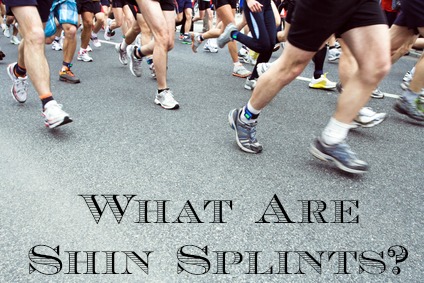I started running regularly last year with the couch to 5k program. We ran a few races and after nearly every one I experienced shin splints which would then keep me from running for the next few days, or even up to a week. Needless to say, it is very frustrating to have to put your training on hold.

[tweetthis]What exactly are shin splints and what can you do to prevent and heal?[/tweetthis]
I bought some new shoes late last year and made sure I got a fitting in the hopes I would lessen my chances of getting shin splints. They helped some, but I still experienced shin splints after my first 10k because I pushed myself way harder then normal.
What are Shin Splints? ‘Shin splints’ is pain in the shins and lower legs that is sometimes caused by running. This could happen when you run too much, too soon, or run harder then you are used to. Basically, they are caused by overuse. It can also be caused by not wearing the proper footwear.
How can I treat Shin Splints? Sometimes shin splints can be treated simply by resting, but icing and massaging your shins can help a lot too, as well as stretching. You can also take anti-inflammatory pain killers to help with the pain.
How can I prevent Shin Splints? Wearing the proper footwear is the first step. You want to make sure you don’t hit the ground flat footed, and that you are not overpronating. Make sure that if you are upping the intensity or duration of your runs you are doing it slowly, and that you are warming up before your runs with a quick walk or slow jog and stretches, and stretching thoroughly after your run. You can also strengthen the muscles by doing toe raises, and strengthening your hip flexors and core will also help.
You want to make sure that even if you are resting your legs while you have shin splints that you are still doing cardiovascular exercise, like biking, swimming, or easy walking.

One Comment